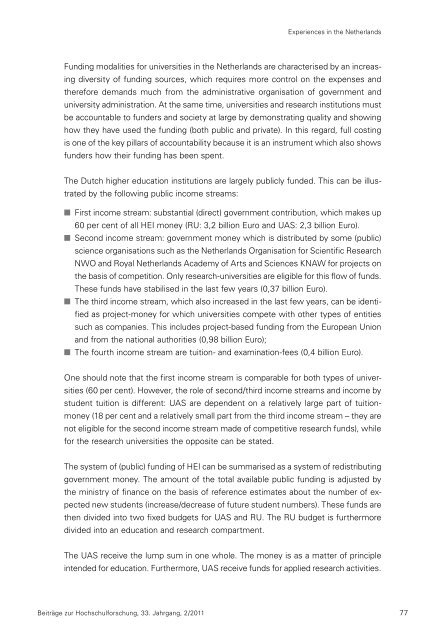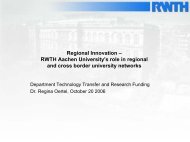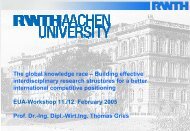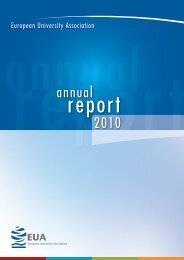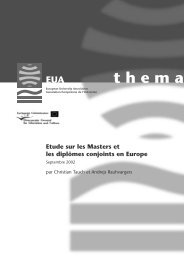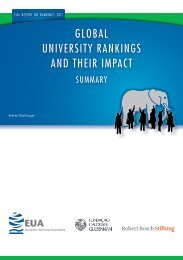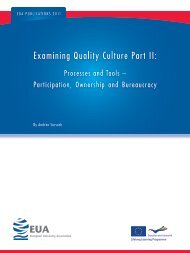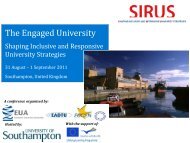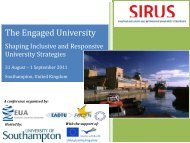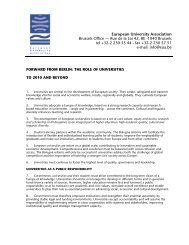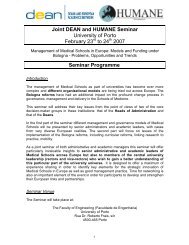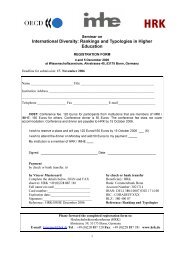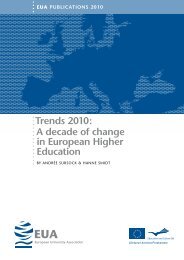Beiträge zur Hochschulforschung - European University Association
Beiträge zur Hochschulforschung - European University Association
Beiträge zur Hochschulforschung - European University Association
Create successful ePaper yourself
Turn your PDF publications into a flip-book with our unique Google optimized e-Paper software.
Experiences in the Netherlands<br />
Funding modalities for universities in the Netherlands are characterised by an increas-<br />
ing diversity of funding sources, which requires more control on the expenses and<br />
therefore demands much from the administrative organisation of government and<br />
university administration. At the same time, universities and research institutions must<br />
be accountable to funders and society at large by demonstrating quality and showing<br />
how they have used the funding (both public and private). In this regard, full costing<br />
is one of the key pillars of accountability because it is an instrument which also shows<br />
funders how their funding has been spent.<br />
The Dutch higher education institutions are largely publicly funded. This can be illus-<br />
trated by the following public income streams:<br />
■ First income stream: substantial (direct) government contribution, which makes up<br />
60 per cent of all HEI money (RU: 3,2 billion Euro and UAS: 2,3 billion Euro).<br />
■ Second income stream: government money which is distributed by some (public)<br />
science organisations such as the Netherlands Organisation for Scientific Research<br />
NWO and Royal Netherlands Academy of Arts and Sciences KNAW for projects on<br />
the basis of competition. Only research-universities are eligible for this flow of funds.<br />
These funds have stabilised in the last few years (0,37 billion Euro).<br />
■ The third income stream, which also increased in the last few years, can be identi-<br />
fied as project-money for which universities compete with other types of entities<br />
such as companies. This includes project-based funding from the <strong>European</strong> Union<br />
and from the national authorities (0,98 billion Euro);<br />
■ The fourth income stream are tuition- and examination-fees (0,4 billion Euro).<br />
One should note that the first income stream is comparable for both types of univer-<br />
sities (60 per cent). However, the role of second/third income streams and income by<br />
student tuition is different: UAS are dependent on a relatively large part of tuition-<br />
money (18 per cent and a relatively small part from the third income stream – they are<br />
not eligible for the second income stream made of competitive research funds), while<br />
for the research universities the opposite can be stated.<br />
The system of (public) funding of HEI can be summarised as a system of redistributing<br />
government money. The amount of the total available public funding is adjusted by<br />
the ministry of finance on the basis of reference estimates about the number of ex-<br />
pected new students (increase/decrease of future student numbers). These funds are<br />
then divided into two fixed budgets for UAS and RU. The RU budget is furthermore<br />
divided into an education and research compartment.<br />
The UAS receive the lump sum in one whole. The money is as a matter of principle<br />
intended for education. Furthermore, UAS receive funds for applied research activities.<br />
<strong>Beiträge</strong> <strong>zur</strong> <strong>Hochschulforschung</strong>, 33. Jahrgang, 2/2011 77


